Special thanks to those great collaborators and friends who helped shape and inspire this book over its decade of gestation, including Karl Squier, John Phillips, William Dillingham, Michael Evenden, Steve Murray, Marilynne McKay, Beth Bornstein, and Alice Benston.
Thanks also to LeAnn Fields, Scott Ham, and Jan Opdyke at the University of Michigan Press; to the anonymous reviewers whose input helped me hone the manuscript; to my developmental editor, Sarah McArthur Smith; to Ellen Gainor, Sandy Thatcher, and Lisa Macklin; to Amy Benson Brown and Elizabeth Gallu of Emory University's Author Development Program; and to the Emory Theater Studies Department. My work in the final stages of the book's creation was also supported in part by a grant from the Emory College of Arts and Sciences and the Laney Graduate School.
Finally, I am especially grateful to my students in the Creating New Works classes at Tufts University, Simon Fraser University, and Emory University for their insights into what works.
Introduction
This book is about making plays from literature. It is a primer on the art of adaptation. I focus on techniques and strategies you can use to adapt literature into stageworthy plays. To guide you, I have analyzed projects that have been successfully adapted from an array of novels, short stories, poems, autobiographies, and essays, by widely diverse writers.
Both theater professionals and amateurs interested in theater can use the ideas I offer here. I've taught this material for thirty-five years in courses at universities, including Emory, Tufts, Simon Fraser, and the University of Massachusetts. I also lead workshops in adaptation for professional theaters and have even taught it to junior high school students. I hope that those of you with a liberal arts background or who are avid readers will see new possibilities in familiar literature as you read each chapter. You need not be experienced in theater arts to put these ideas into practice; any of you who see creativity as an adventure might be inspired to try your hand at adaptation.
The professionals among you will have a body of experience that gives you your own entry points into what I offer here. As you apply these ideas, you will be able to draw on the techniques you already know, which will allow you to make longer, more daring leaps as you construct your adaptations.
Each adaptor creates his or her own approach for transforming literature into drama. Often the biggest thrill for a theater artist is exploring the unknown, finding something, and then sharing the discovery in a world premier. As maddening as the unknown can be while collaborating with opinionated others, creating theater is the delirious reality of being your own Dr. Frankenstein and Picassoconstructing with found materials something new, beautiful, and alive. This unique inventiveness keeps adaptors returning to the cherished literature we want to bring to life onstage.
Although there are many books on birthing babies, there is not oneon birthing a play from a literary source. Some terrific adaptors, including the playwright Horton Foote, director Frank Galati, and actor Simon McBurney, have cogent program notes or articles about their process and philosophy. As I've taught adaptation over the years and experimented with strategies for eclectic subjects and styles of literary sources in my adaptations, it was by trial and error that I uncovered the six basic building blocks that guide me and are central to a successful adaptation. This book is a summary of my discoveries of the methods that most adaptors use, consciously and unconsciously, in the cold heat development of creating something new.
My own discoveries and reading of the limited literature on the subject suggest that these six building blocks are central to a successful adaptation. The building blocks supply a strong, workable model for adapting a wide variety of material from different genres or styles. The strategies are guidelines, not rules. Different adaptors with varying experience and skills, whether in design, acting, directing, music, or movement, or from other disciplines such as psychology or history, will emphasize one element or approach over another.
Artistic endeavors combine fierce imagination and tender logic. Crucial in creativity is finding what feels most vital, what will ground and guide you. These building blocks suggest a possible order. Depending on your material and your connection to it, you may reorder the building blocks to suit yourself. A great character might be your cornerstone, or an evocative theme. Focus on the building block that inspires your best ideas. Then you can return to it and set your other choices with and against it. In creating art we construct with as much planning and clarity as possible, yet we must stay open to the intuitive leaps our imagination and experience give us. Other related theater pieces, films, visual art, music, dance, or experiences in life also influence us and will reveal approaches to your selected adaptation.
The noun playwright attests to the construction activity demanded by theaterthe idea that a play is wrighted, crafted, and constructed rather than just written. Playwrights know that many collaborators will be required to bring a work to fruition.
A Brief History of Adaptation
Adaptation is a profound process, which means you try and figure out how to thrive in the world.
The Orchid Thief in Spike Jonze's film Adaptation.
Theater was, in its earliest days, built on adaptation of strictly oral tradition. The biggest context of adaptation is the urge by someone, usually the adaptor, to spread the word and share a really good story that people might have missed in its original form. We told our stories until we learned to enact them. As we evolved, so did the method of telling stories: cave paintings, chants, songs, and epic poems created transformations from one medium into another. That life exists in myriad and exotic forms launched Darwin's Origin of Species, which helped creative types like us launch an adaptation industry of narratives morphing into forms and genres that would make the list Polonius spins for Hamlet seem quaint rather than convoluted. A substantive subdiscipline of adaptation studies has been emerging since I started writing this book; its fundamental terms include

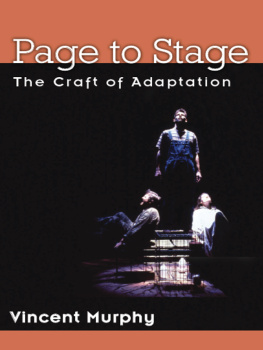

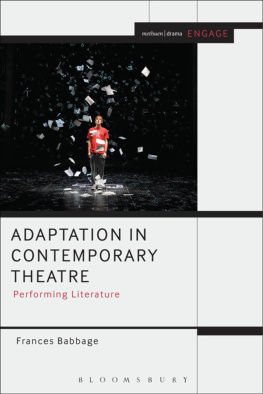

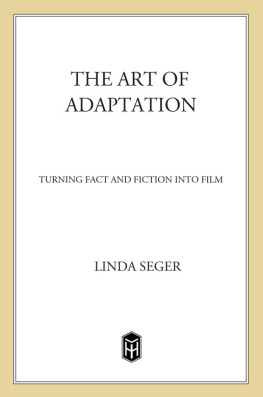
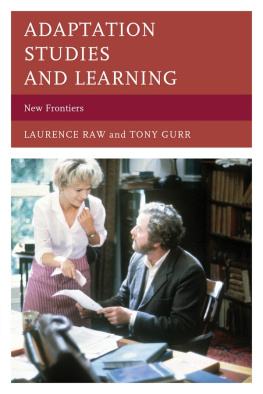
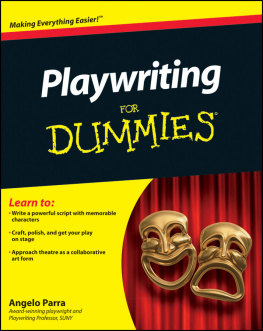
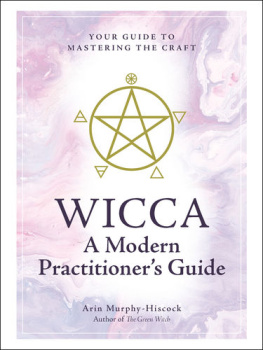

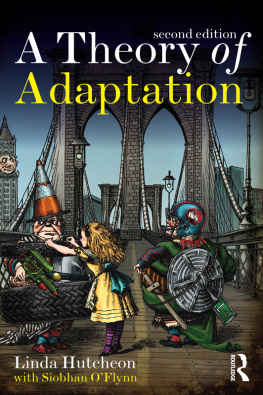

 Printed on acid-free paper
Printed on acid-free paper